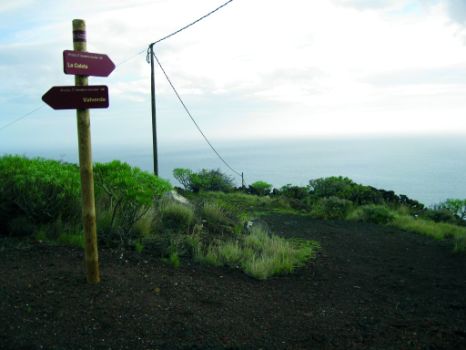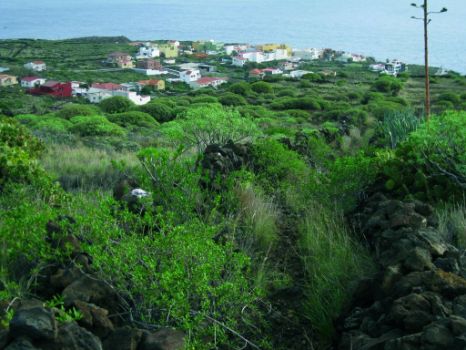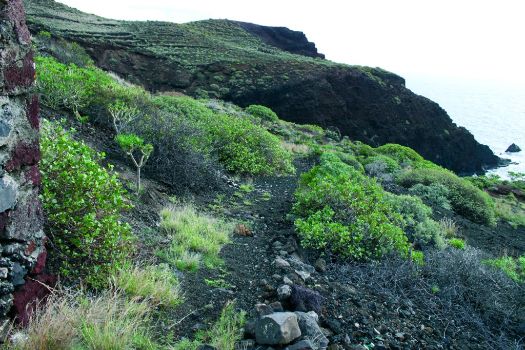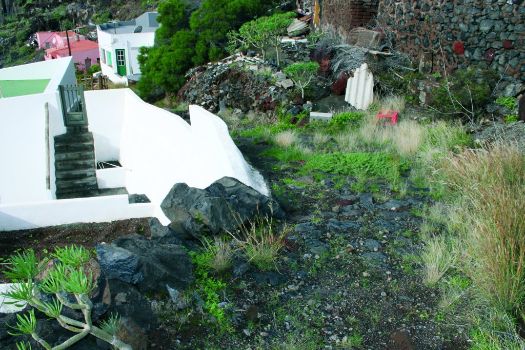Net of Natural
Trails

Stage 8: Puerto de La Estaca - Valverde - La Caleta
Description
The Road along the Northeast Coast
From Puerto de La Estaca, the circular trail continues its journey along the northeast coast of the island toward Valverde, and it then descends towards the coastal village of La Caleta, in whose vicinity important petroglyphs attributed to the early inhabitants of the island are preserved.

The first stretch of this stage of the circular trail joins for a moment a detour of GR-131 from Puerto de La Estaca, in the direction of Valverde, until the path reaches a fork. This section starts from a vertical sign located in the center of the village of Puerto de La Estaca. We will continue our way in the direction of Valverde along García Escámez Street, where parts of the track are protected from traffic by a wooden railing.
Located on the northeast of the island, Puerto de La Estaca belongs to the municipality of Valverde and is the main sea connection point of the island, handling passenger traffic. As we move away from the village and begin our ascent, we can enjoy a magnificent view of the harbor and Cueva del Diablo (Devil’s Cave), in the area of Mojara, a very relaxing spot where we can calmly enjoy the coast.

A few meters further up, we reach a road; we should be careful as we walk on the left side until we arrive to a large parking area. From this area, we continue along a cobbled track with a steep slope that runs through an area of terraced farm lands which have been abandoned and are now invaded by sorrel (Rumex lunaria), tabaiba (Euphorbia sp.), thyme (Thymus vulgaris) and verode (Senecio kleinia), among other species. From this high point it is possible to glimpse the village of La Caleta, where this stretch of the trail comes to its end.
Once we reach a crossroads marked with a vertical pole, we are offered the choice to follow the track that goes toward La Caleta and thus continue the trail or, alternatively, we can head out in the direction of Valverde in order to follow the section of the trail Puerto de La Estaca – Valverde, of path GR-131. From this crossroads, in the direction of La Caleta, the cobbled track turns into a dirt track which is particularly nice to tread on when the soil is dry.

Using our destination, La Caleta, as a reference point on the coast, we descend along grassland landscapes invaded by species particularly resistant to sun exposure, such as the century plant or maguey (Agave americana), an invasive plant that was introduced in the Canary Islands in the sixteenth century and is characterized by its cyme of big flowers that can reach up to 8 m in height. This plant can also be found in abundance along the Mediterranean coast.
Finally, after a gentle descent, we arrive at the coastal village of La Caleta, which became a place of secondary residence for the people of the region after it stopped its traditional activity as a fishing port; it used to be an alternative harbor to Puerto de La Estaca in old times. In the vicinity of the coastline, there is also an archeological site with some of the most important remains of Libyan-Berber engravings in the Canary Islands.
Sites of interest
Profile
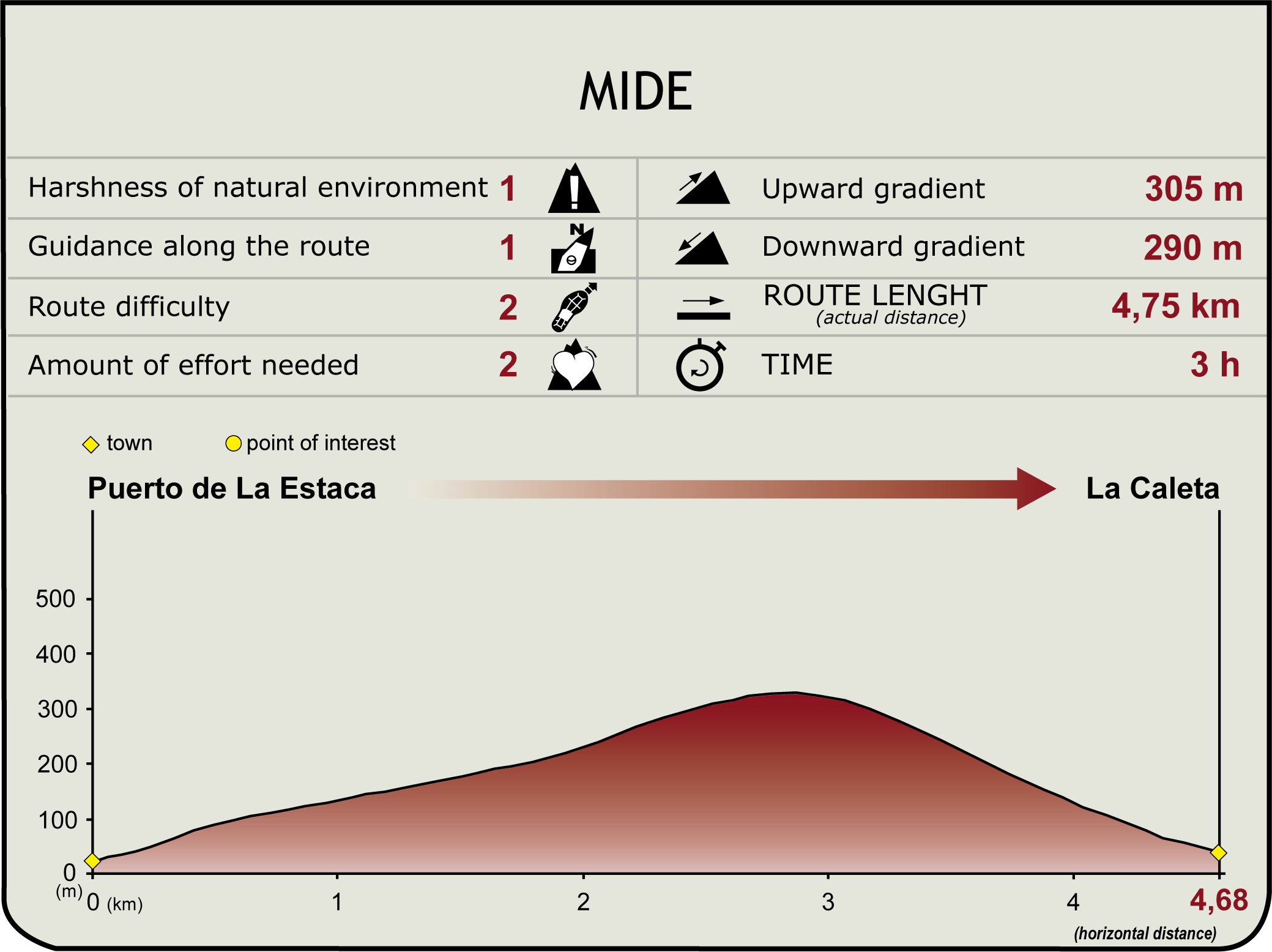
Highlights
Further information
Petroglyphs
The Canary Islands have a remarkable heritage of Berber cultural artifacts, since the original settlers of the islands came from North Africa. Evidence of this past is the large number of Lybian-Berber alphabetic inscriptions found on rocks on the beach, ravines and mountains, as well as on movable cultural objects related to the customs and traditions of the early inhabitants of the islands.
Libyan-Berber writing, related to the Phoenician alphabet, is a variant of the Mediterranean form of writing that evolved in the Maghreb, and that had already spread widely throughout North African by the third century B.C.
The Bimbaches, ancient inhabitants of El Hierro, left a legacy of numerous petroglyphs scattered throughout the island which have not yet been deciphered. The most extensive and significant ones are Los Letreros de El Julán (Letters of El Julán), village where there are also remains of an ancient place of meeting (Tagorot). Among the most interesting petroglyphs we should also mention those found on the coast of La Caleta, as well as in La Cándida and Tejeleita (near Valverde).
These engravings have been studied by the increasing number of researchers in the Berber or Tamazight language, and they are considered an essential element to understand the evolution of this writing, recognized as one of the earliest writing systems in the history of mankind.



